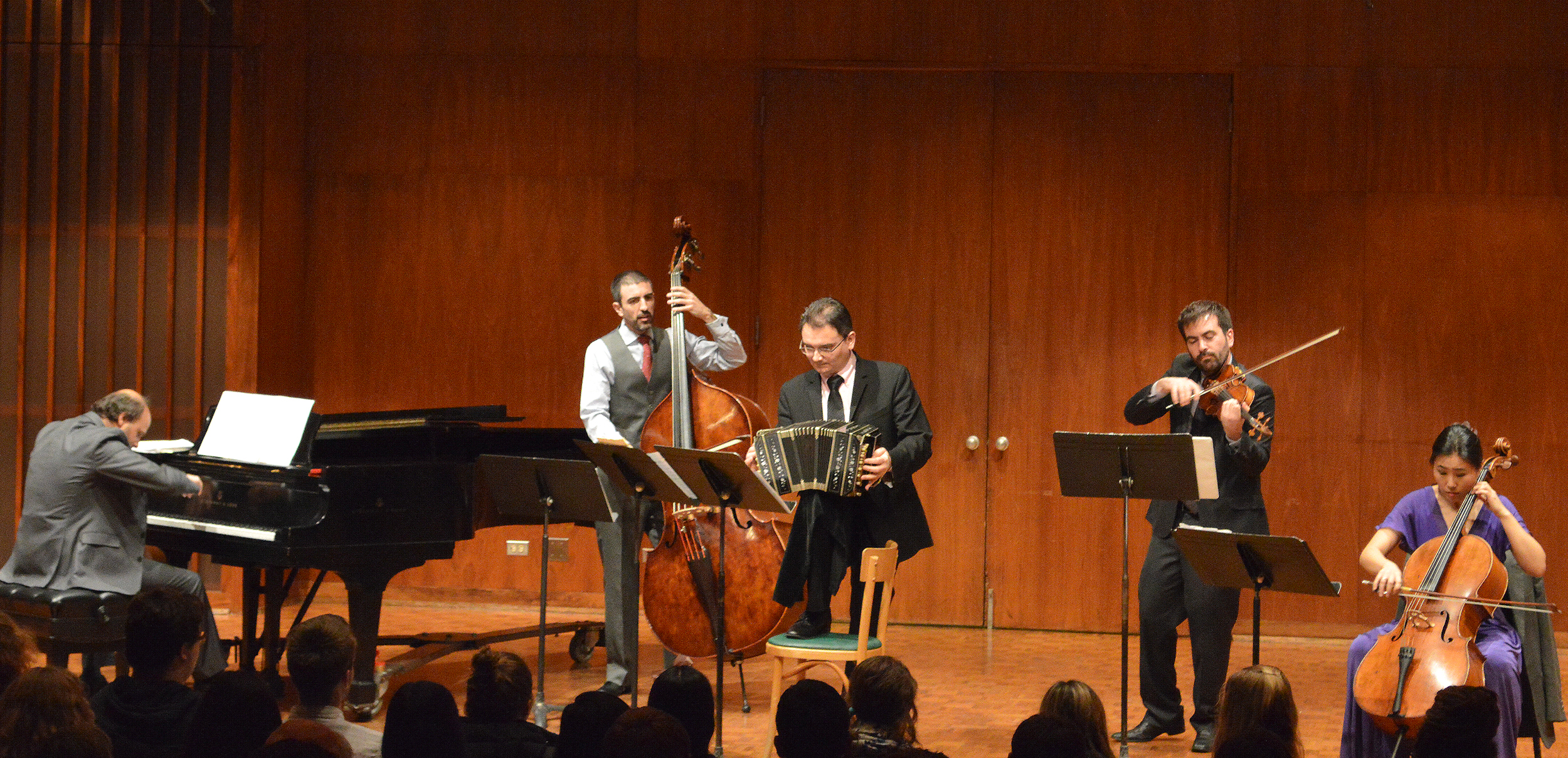This past Monday, Feb. 1, at 8 p.m., Lawrentians experienced some music in a unique style from a different part of the world. As part of the World Music Series, the Argentinean Héctor del Curto Tango Quintet performed to a packed Harper Hall. The quintet specializes in traditional tango music and features a bandoneon—an instrument like an accordion used specifically for tango music—along with a piano, violin, cello and bass.
The group was barely on stage for a minute before they began playing. The tango style washed over the audience in an instant, drenching everyone with its multi-layered sound. With the music’s lulls and pushes, blending strings, and piano and bass undertones, the normally distinctive timbre of the bandoneon fit right into the group’s sound just like the bandoneonist himself, Héctor del Curto—the quintet’s namesake—fit perfectly standing in the middle of the group, the pianist and bassist to his right and the violinist and cellist on his left.
All of the pieces featured clear, successive strong beats with lots of syncopated rhythms incorporated into the melodies. At times, the bassist slapped the back of his instrument in between bow strokes to keep the beat, and the violinist occasionally chopped behind his bridge in order to get a more gritty articulation from the strings. Every note brought with it an invitation to dance; every phrase reflected a little bit of attitude; and every one of the players frequently pulsated the downbeat by moving his or her body in time to the music. It was obvious to anyone watching that these players felt their music with every breath in their lungs and every skillful stroke of their hands.
The quintet played several pieces, including some composed by the legendary father of tango music, Astor Piazolla. Some displayed soulful string playing that sounded like the instruments themselves were crying. Others had a more light and airy feel with melodic lines that were shy, sassy and passionate all at the same time. Often, the pieces contained long, sweeping lines that would abruptly cut back to short, choked strokes, resulting in a sound that started out luscious and soft that then became harsh and pointy. Almost every single song ended with a curt, short note played after a pause.
At all times during the performance, I enjoyed watching the players’ technique—the loose wrists of the bassist on every bow stroke, the gentle swaying of the cellist, the impeccable phrasing of the bandoneonist, the careful nodding to the beat of the pianist and the heavy yet lilting tone of the violinist. My personal favorite piece was the sentimental and passionate “Verano Porteño,” but, judging by the subsequent loud applause that urged the group back onstage for an encore piece, I think that the overall audience favorite would have to be the final number, “Adios Nonino,” a piece that Piazolla wrote to commemorate his deceased father—a majestic celebration of a life that anyone could appreciate.
Overall, the Héctor del Curto Tango Quintet played an inspiring performance that also educated audience members about another style of music heard around the world. For those interested in enjoying superb music in different musical styles from around the globe, the next concert in the World Music series, featuring Zafir with Simon Shaheen, will be Friday, April 1 at 8 p.m. in the Lawrence Memorial Chapel.

